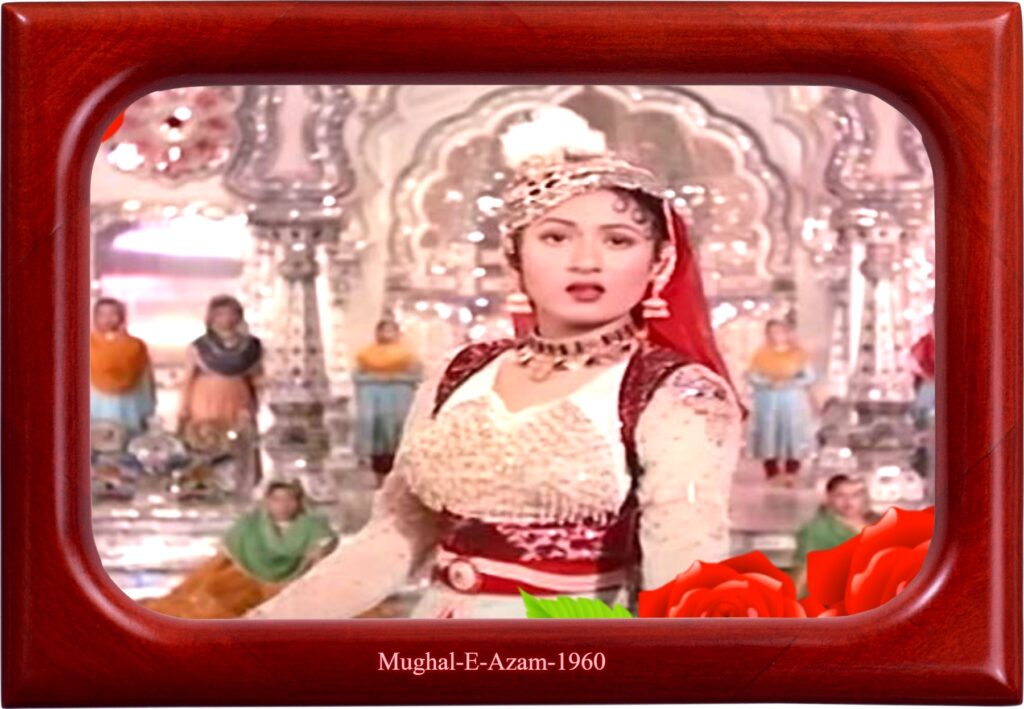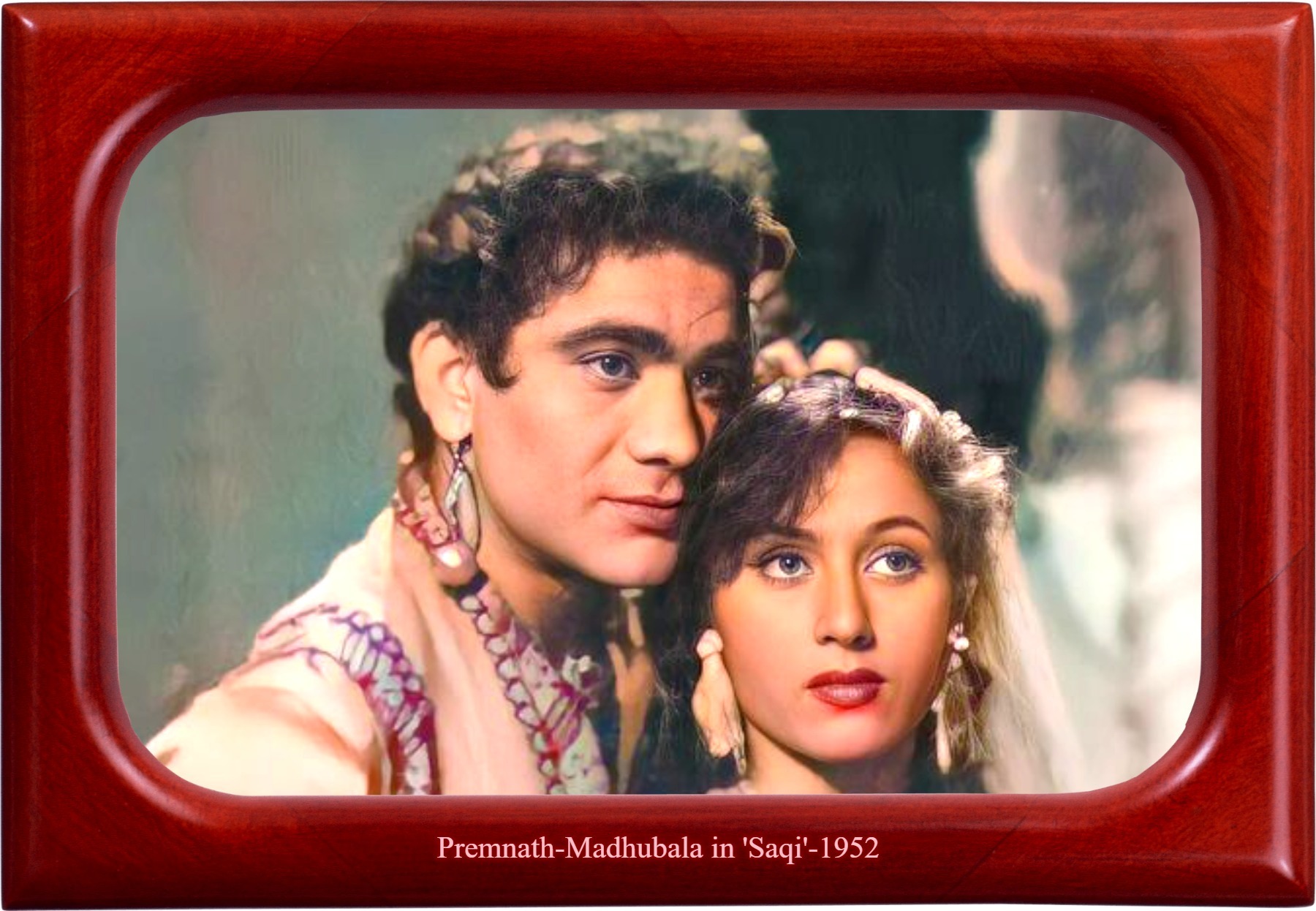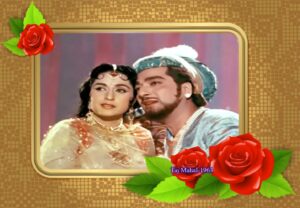By Jagmohan Singh Barhok
समां बड़ा ही सुहाना रे सजना
मेरे सपने में आना रे सजना
मेरे सपने में आना रे
Raj Hath-1956
Known by her nom de plume Madhubala, Begam Mumtaj Jehan Dehlavi, blossomed into a fragrant flower as she grew. Often compared with the Hollywood sex-symbol Marilyn Monroe and Venus de Milo, the Greek goddess of love and beauty whose sculpture is on display at Louvre Museum, France. She had the looks that took your breath away.
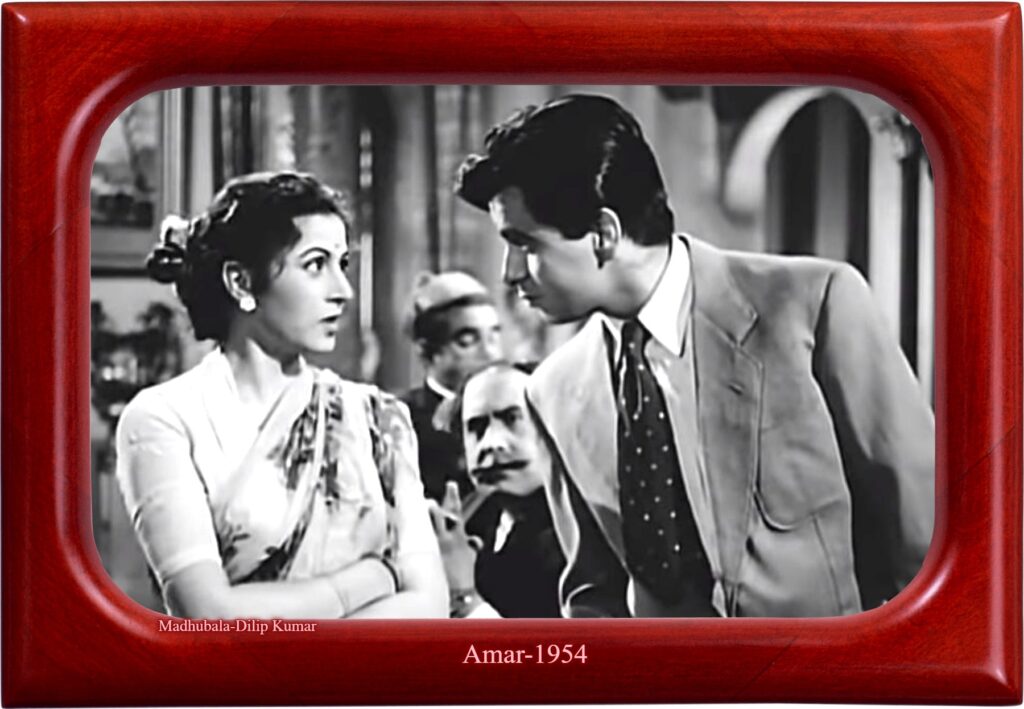
Madhubala’s debut film was ” Basant” (1942) as a child artist. In 1947 She was cast opposite Raj Kapoor in ” Neel Kamal” then barely 14. American photographer, James Burke, was so enamored with the belle that he took her photographs and published them in Life magazine (1951) thereby making her an international celebrity. “Mr. & Mrs ’55″( 1955), “Chalti Ka Naam Gaadi”, “Kala Paani”, and ” Phagun” (1958) are some of her prominent movies. Her entry in the famous club number ‘Aaiye Meharbaan'(Howrah Bridge-1958)rendered by Asha Bhosle speaks volumes of her ability to portray a scene with chrismatic finesse sans vulgarity and nudity. She ruled the roost in late fifties and danced straight into the hearts of millions of cine-lovers.
Madhubala gave a flamboyant performance in ” Barsaat Ki Ek Raat” with soulful music by late Roshanji with ‘Zindagi Bhar Nahi Bhoolegi Woh Barsaat Ki Raat’a popular number to boast. However, the film which brought the actress into the lime light was Kamaal Amrohi’s “Mahal” (1949). “Jwala” starring Sunil Dutt in the lead was her last film. The film began in late 50s,was released in 1971 after her death. An upcoming starlet named Sona who was Madhubala’s look-alike did the unfinished job as a duplicate. I watched the movie at New Basant cinema in Kanpur.
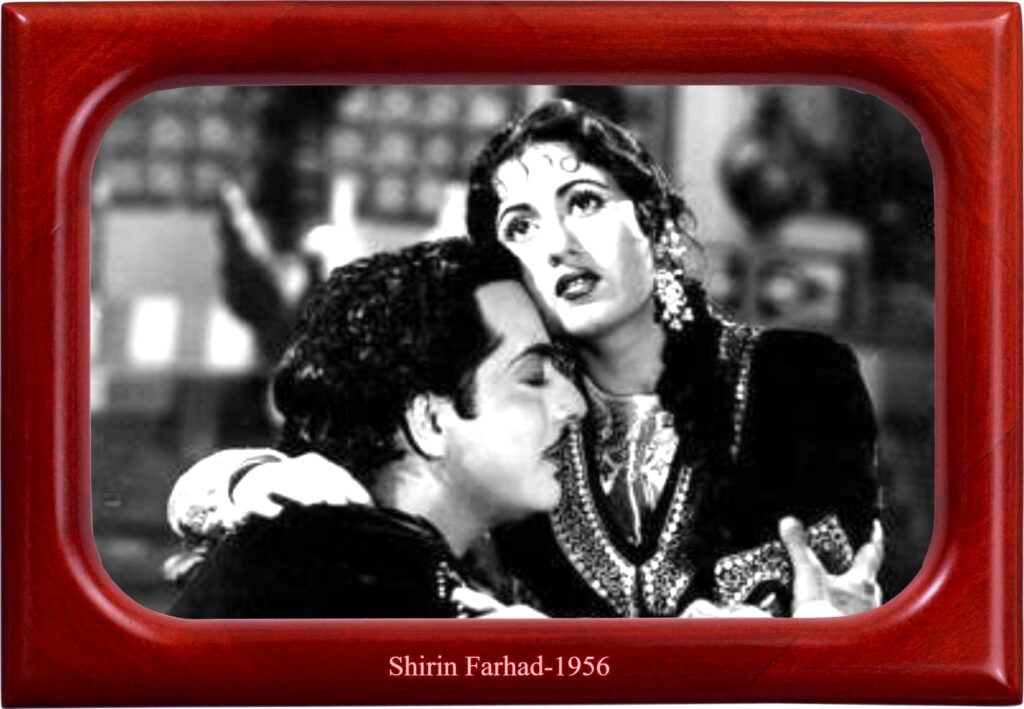
One of her most talked about movies was “Amar” (1954).The film highlights three characters – Amar ( Dilip Kumar), an upper-class Advocate. Anju (Madhubala, a well educated social activist) & Soniya, a milkmaid whom Dilip Kumar impulsively rapes one stormy night. Soniya gets pregnant and subsequently ostracized by the society. When Anju comes to know the truth she not only sacrifices her love (both are engaged) but also supports & protects until justice is done to her. Although the film was liked by critics & received positive reviews, it had failed to draw crowds to cinema houses because of its controversial rape scene and that too involving Dilip Kumar. Madhubala was splendid as a social worker & as a female protagonist.
Directed by Mehmboob Khan( of ‘Mother India’& ‘Aan’ fame), the film had many popular numbers like-‘Insaaf Ka Mandir Hai Ye Bhagavaan Ka Ghar Hai’ (Rafi) & ‘Tere Sadake Balam Na Kar Koi Gam’, ‘Na Milta Gham Tau Barbadi Ke Afsaane Kahan Jaate’ & ‘Jaane Vaale Se Mulaqat Na Hone Payi’ (Lata) with lyrics penned by Shakeel Badauni under the music score Naushad.
It would be injustice if we did not mention some other popular numbers like “Guzra Hua Zamana, Aata Nahi Dobara” & “Bichde Hue Milenge Phir Kismat Ne Gar Mila Diya”( Shirin Farhad-1956. Music S. Mohinder),”Ek Pardesi Mera Dil Le Gaya” and “Tum Rooth Ke Mat Jaana” duets rendered by Asha-Rafi ( Phagun-1958), “Achcha Ji Main Haari chalo Maan Jao Na” another duet by Rafi-Asha (Kala Paani-1958),”Thandi Hawa Ye Chandni Suhani”( Jhumroo-1961),”Chand Raat Tum Ho Saath”( Half Ticket-1962) and the masterpiece that made the Mughal ruler Akbar so enraged in ‘Jab Pyaar Kiya To Darna Kya’ are some of the gems of songs from her films. I rate K. Asif’s “Mughal-E-Azam”( 1960) as the technically best film ever made by any Indian.
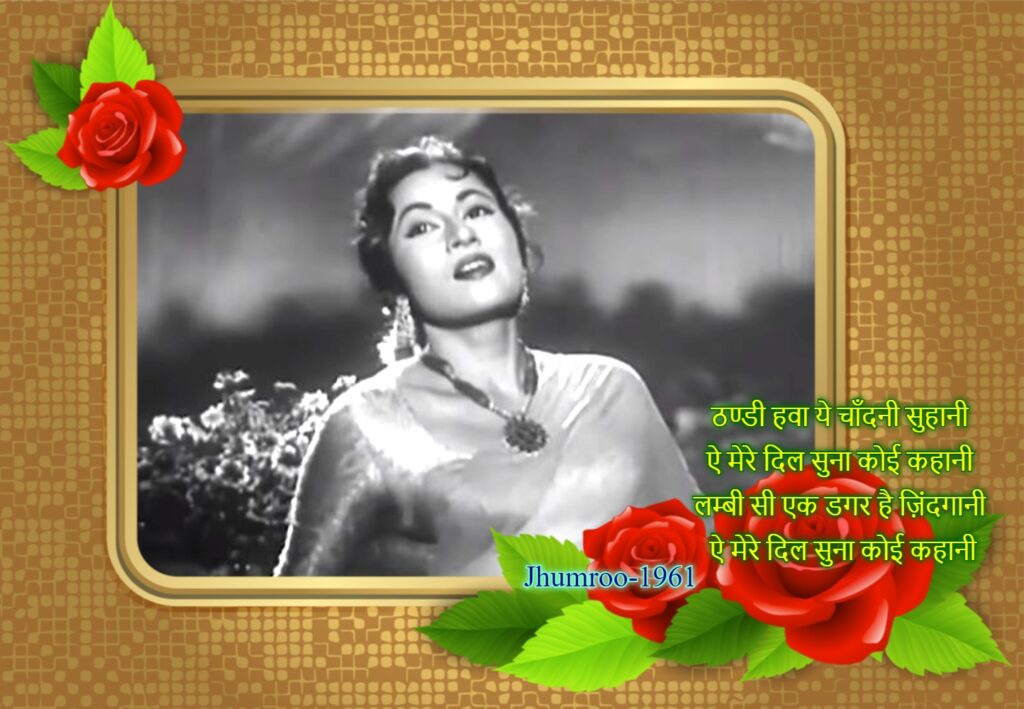
Madhubala’s father Attaullah Khan played a villain in her life. In fact, throughout her life, he made her dance to his tunes. At one time she was in love with Prem Nath but failed to marry him because they were from different religions. The actress whom millions adored experienced pangs of bitterness and insult because of his father. She could not marry Dilip Kumar because of him as he never wanted to let the ‘golden goose’ get away. It was because of him that producer B. R. Chopra eventually replaced her with Vyjayanthimala in his underproduction “Naya Daur”. Chopra was threatened and lawfully challenged in the court. Resultantly, the producer gave his testimony against Attaullah Khan in the court of law, supported by Dilip Kumar. “Naya Daur” (1957) turned out to be a box office bonanza( 600 crore at present rate) and won Filmfare Awards for Best Story( Akhtar Mirza),Best Music Director( O. P. Nayyar) and Best Actor( Dilip Kumar). Dilip and Madhubala both were not in talking terms during the making of Mughal-E-Azam, though both played their respective characters with aplomb. Surprisingly, the heart- throb of millions received only one Filmfare Best Actress Nomination in her life for her role in “Mughal-E-Azam”. Shirin Farhad, opposite Pradeep Kumar, (1956) was one of her her most successful films. Married Kishore Kumar in 1960s.
